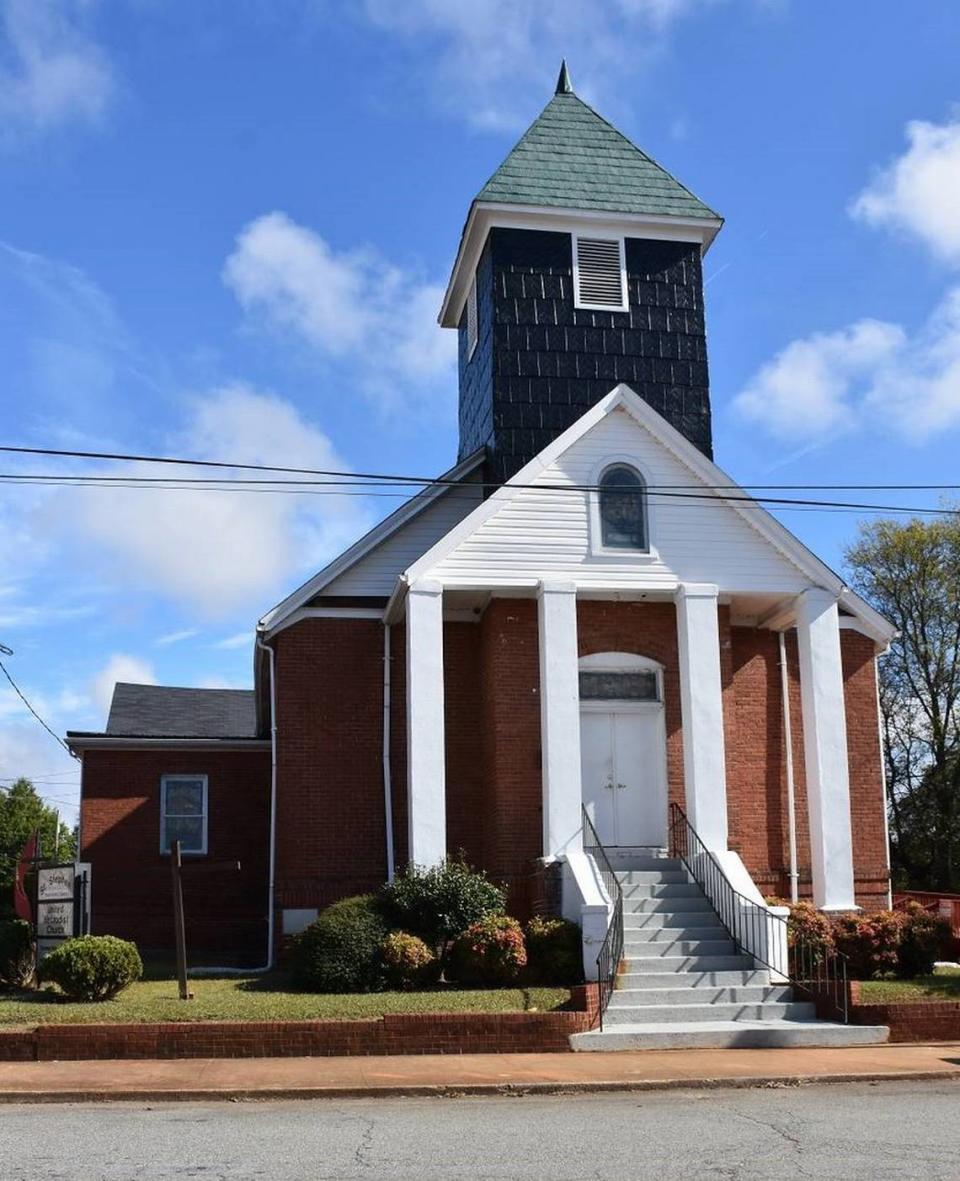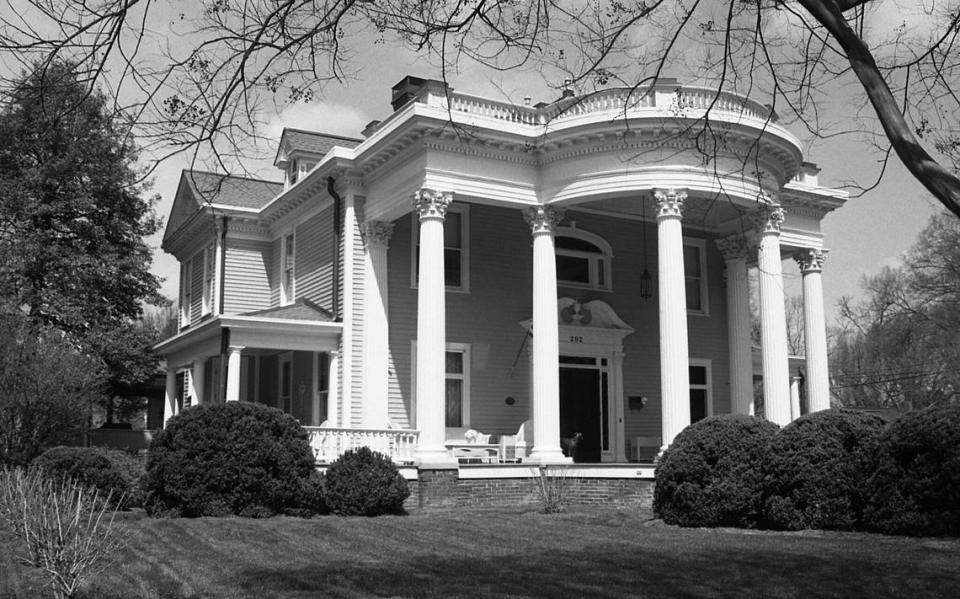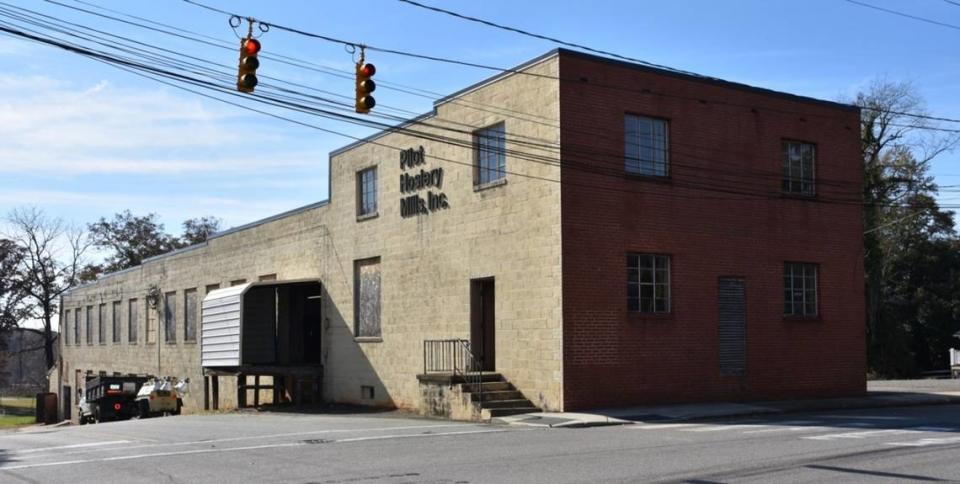11 NC sites added to National Register of Historic Places. Here are the new spots.
If you’ve ever driven down Oberlin Road in Raleigh, you’ve noticed the large green historic house close to the road that was moved and recently restored.
That home, the Graves-Field House, is one of 11 new additions from North Carolina to the list of houses, buildings and districts on the National Register of Historic Places.
Here’s more about the Graves-Fields House in Raleigh being relisted, and more North Carolina changes to the National Register of Historic Places just announced by the N.C. Department of Natural and Cultural Resources:
The Graves-Fields House, Raleigh
The two-story Queen Anne architectural style home now at 814 Oberlin Road in Raleigh was built in 1886 and was listed in the national register before it was moved.
It is owned by Preservation North Carolina, and used for offices in the same historically African American community. Oberlin was once a freedmen’s village after the Civil War, now part of the city.
The house was previously listed as the Willis M. Graves House and known as Oakcrest.
When the house was listed before, it was located at its original address of 802 Oberlin Road, but was moved in 2019, minus some 20th century additions, according to the National Register of Historic Places, which also details the full history of the property.

Willis Graves, the original owner of the house, was a brick mason and his wife Eleanor Hinton Graves was a school teacher. Their children and grandchildren went on to careers in law, journalism, education and real estate.
In the late 1920s, the house transferred owners out of the Graves family, and in 1945 was bought by Spurgeon and Jeannetta Fields, who were Oberlin residents, according to the National Register.
Fields heirs sold the property to real estate developers in 2016, leading to the relocation and restoration of the house by Preservation North Carolina.
The Oberlin area is adjacent to the Village District of shops and restaurants, recently renamed from Cameron Village because it was named for Duncan Cameron, who had been the largest Antebellum slaveholder in the state. The nearby Cameron Park neighborhood is also going to be renamed.
St. Stephen United Methodist Church, Lexington
St. Stephen United Methodist Church, a historically African American church, was established in 1868 and is the oldest Black congregation in the Lexington district of the UMC.
The sanctuary dates to 1921 and the 1892 classroom wing was once the sanctuary. During the 1960s, civil rights movement meetings were held at the Colonial Revival style church.

Earle W. Webb Jr. Memorial Civic Center and Library, Morehead City
The Webb center and library in Carteret County is a Colonial Revival-style public building from the 1930s.
Enfield Historic District, Enfield
The Enfield Historic District in southern Halifax County includes a variety of residential and business architectural styles from 1833 to 1972, including Greek Revival, Italianate, Queen Anne, Gothic Revival, Romanesque Revival, Classical Revival, Spanish Revival, Neoclassical, Colonial Revival, Craftsman, Period Cottage, Art Deco, Minimal Traditional, Ranch and Modernist.
Elizabeth and Bowman Gray Jr. House, Forsyth County
New to the register is the Bowman’s 1950 home at Brookberry Farm in the Lewisville area.
According to the National Register, it is a example of Winston-Salem architect William Roy Wallace’s design of a Georgian Revival house.
Ella Brown Cannon House, Salisbury
The Ella Brown Cannon House in Rowan County is built in the Southern Colonial Revival style in North Carolina. It was built in 1905.

John N. Smith Cemetery, Southport
The Brunswick County cemetery was added to the register for its social history and Black heritage, according to the Register.
It was established in 1874 and served as the Black community’s only communal cemetery until Northwood Cemetery two blocks away was integrated in 1974.
Pilot Hosiery Mill, Pilot Mountain
The historic Pilot Hosiery Mill in Surry County was added to the National Register “due to its role as one of three primary textile manufacturers driving Pilot Mountain’s economy.”
The hosiery mill first operated in the 1940s and was later expanded. It closed in 2011.

Robbinsville Downtown Historic District
The Robbinsville Downtown Historic District was added to the list for its major economic development and prosperity era between 1872 and the mid-1960s.
It includes the Graham County Courthouse, which had been listed on the National Register since 2007.
South Asheville Cemetery and St. John ‘A’ Baptist Church, Asheville
The cemetery and church were added separately to the register “as a reflection of the development of the traditionally African American community of South Asheville, weaving together the areas of settlement, community development, African American ethnic heritage, and social history.”
The cemetery, dating to the 1800s, is the oldest cemetery for Black residents in Western North Carolina and began as a cemetery for people enslaved by William and Sarah McDowell.
Other register changes
▪ Saint Augustine’s College campus in Raleigh also added more documentation, updating its significance in education and Black heritage.
▪ The Mount Airy Historic District in Surry County added updated documentation to the National Register, including its inventory list of current appearance and status of contributing and non-contributing buildings.
▪ The Lee County town of Sanford adjusted boundaries of its historic district in the National Register. Boundaries have been expanded in three areas and reduced in three small areas to remove non-historic, altered or vacant buildings.

